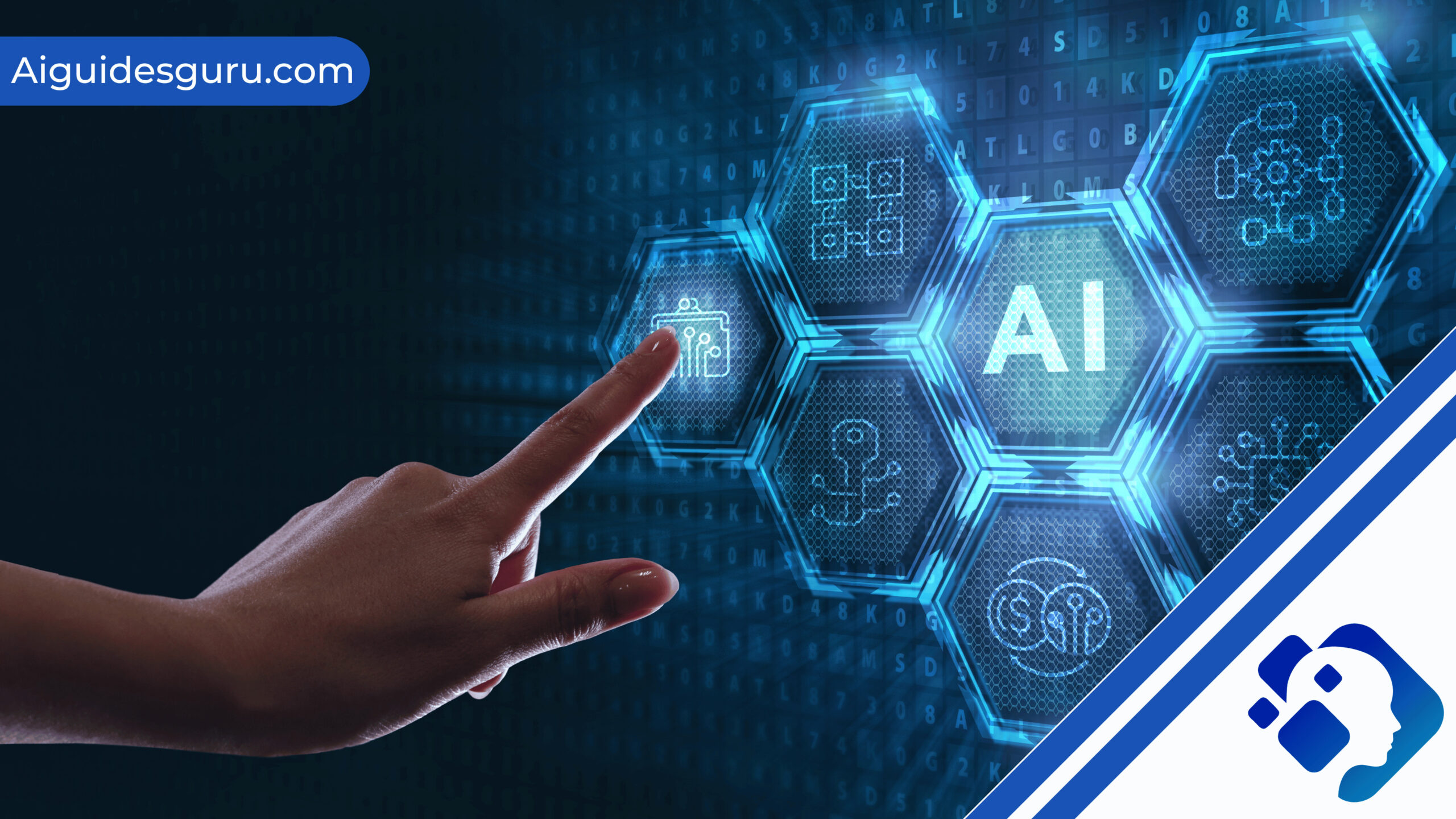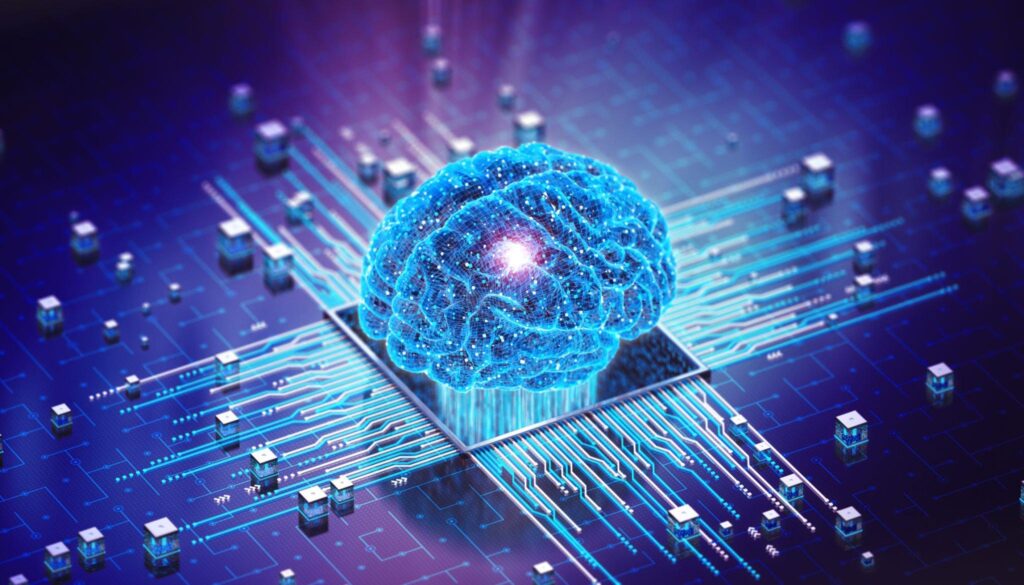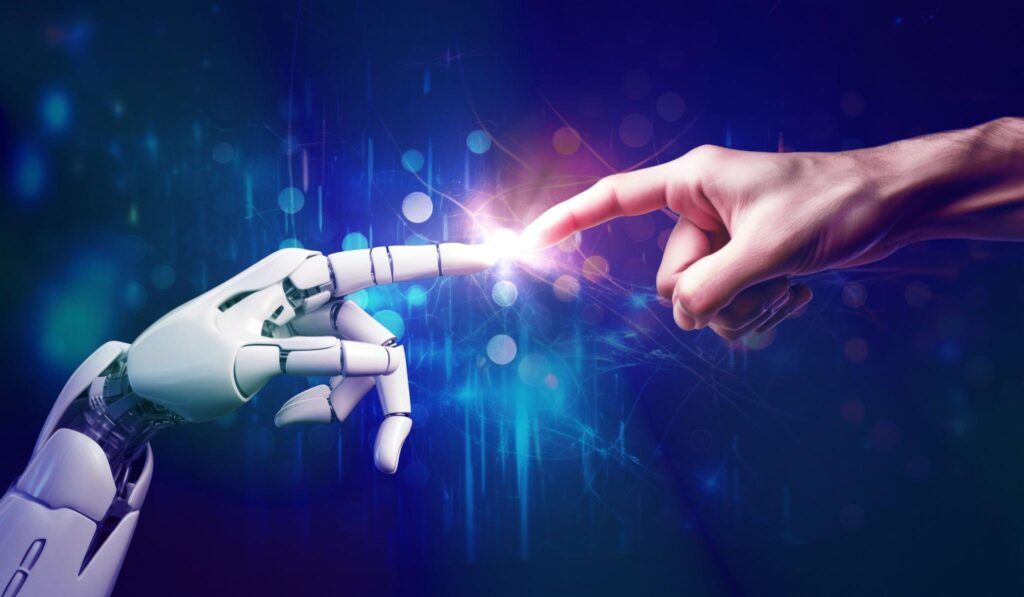How Accurate Is AI

In an era where technological advancements have rapidly transformed the way we live, artificial intelligence (AI) has emerged as a powerful tool that holds immense potential. From voice assistants to self-driving cars, AI has become increasingly integrated into our everyday lives. However, amidst the excitement and promises, a question lingers: How accurate is AI? In this article, we will delve into the intricacies of AI’s accuracy, exploring its capabilities, limitations, and the strides made in improving its performance.
Understanding AI Accuracy:
- Understanding AI Accuracy:
- AI Can Be Both Accurate and Transparent
- The impact of AI on content accuracy
- What is AI and how does it work in relation to content accuracy?
- The benefits of using AI to verify the accuracy of online content
- The limitations and challenges of AI in ensuring content accuracy
- Examples of How AI is Currently Being Used to Fact-Check and Verify Online Content
- Conclusions
- FAQs
AI accuracy refers to the ability of an AI system to produce results that align with the desired outcomes. Achieving high accuracy is essential for AI systems to be reliable and trustworthy. The accuracy of AI is heavily dependent on the quality and quantity of data it is trained on, as well as the algorithms and models used to process that data. While AI has shown remarkable accuracy in certain tasks, such as image recognition and natural language processing, it is not without limitations.
Limitations and Challenges:
One of the primary challenges AI faces is its vulnerability to biases present in the data it learns from. If the training data is biased, AI systems can perpetuate and amplify those biases, leading to unfair or discriminatory outcomes. Ensuring that AI is trained on diverse and representative datasets is crucial in mitigating these biases and enhancing accuracy.
Another limitation is the concept of “adversarial attacks,” where AI systems can be manipulated or deceived by introducing subtle changes to input data. This vulnerability raises concerns about the robustness and reliability of AI systems in real-world scenarios. Continued research and development are necessary to bolster AI’s defenses against such attacks and improve its accuracy.
Improving AI Accuracy:
The AI community is actively engaged in enhancing the accuracy of AI systems. Researchers are constantly developing new algorithms and models that push the boundaries of AI performance. Techniques like deep learning and neural networks have revolutionized AI, enabling it to achieve unprecedented accuracy in various domains.
Furthermore, advancements in data collection and processing have contributed to improving AI accuracy. With access to vast amounts of labeled and annotated data, AI models can be trained more effectively, leading to higher accuracy rates. Additionally, ongoing efforts to address biases in training data are crucial to ensure fair and unbiased outcomes.
The Future of AI Accuracy:
As AI continues to evolve, the future holds great promise for further improving its accuracy. The integration of AI with other emerging technologies, such as quantum computing, could unlock new possibilities and exponentially enhance AI’s capabilities. Moreover, collaborations across academia, industry, and regulatory bodies will play a vital role in establishing standards and guidelines that promote accuracy, fairness, and transparency in AI systems.
In conclusion, while AI has made impressive strides in accuracy, it is an evolving field with ongoing challenges. Recognizing the limitations and actively working towards addressing them will pave the way for more accurate and reliable AI systems. As we navigate the future of AI, it is crucial to strike a balance between innovation and ethical considerations to ensure that AI remains a powerful tool that benefits humanity as a whole.

AI Can Be Both Accurate and Transparent
In the realm of artificial intelligence (AI), accuracy is a fundamental aspect that determines its reliability and effectiveness. However, accuracy alone is not enough to build trust in AI systems. Transparency is equally crucial, as it provides insights into the inner workings of AI algorithms and enables users to understand and interpret the decisions made by these systems. In this section, we will explore how AI can be both accurate and transparent, fostering trust among users.
The Importance of Accuracy:
Accurate AI systems are essential for delivering reliable results and minimizing errors. With accurate AI, tasks such as image recognition, natural language processing, and predictive analytics can be performed with a high degree of precision. Achieving accuracy requires rigorous training and testing of AI models, ensuring they can effectively handle diverse and complex data.
To enhance accuracy, AI developers employ various techniques, including deep learning, ensemble methods, and continuous learning algorithms. These approaches enable AI systems to continuously improve their performance and adapt to changing environments. By striving for accuracy, AI systems become valuable tools that can aid decision-making processes and streamline operations across industries.
The Value of Transparency:
While accuracy is crucial, transparency plays an equally vital role in establishing trust in AI systems. Transparency refers to the ability of AI algorithms and models to provide explanations or justifications for their decisions. It allows users to understand why an AI system arrived at a particular outcome, which is particularly important in critical domains such as healthcare, finance, and law.
Transparency can be achieved through techniques like explainable AI (XAI), which aims to make AI systems more interpretable and understandable to humans. XAI methods enable the generation of explanations or visualizations that shed light on how an AI system arrived at its conclusions. This transparency empowers users to verify the accuracy of AI decisions, identify potential biases, and detect any unintended consequences.
The Synergy of Accuracy and Transparency:
The combination of accuracy and transparency in AI systems strengthens their overall effectiveness and trustworthiness. Accurate AI provides reliable results, while transparent AI enables users to comprehend and validate those results. When users have access to transparent AI systems, they can have greater confidence in the decisions made by these systems and rely on them for critical tasks.
Moreover, transparency can help address concerns related to bias and fairness in AI systems. By providing insights into the decision-making process, transparency allows for the identification and mitigation of biases that may exist in the training data or algorithms. This ensures that AI systems are not only accurate but also fair and unbiased, fostering trust among users and stakeholders.
In the realm of AI, accuracy and transparency go hand in hand. While accuracy ensures reliable outcomes, transparency fosters trust by enabling users to understand and validate AI decisions. By striving for both accuracy and transparency, AI developers can create systems that are not only powerful but also accountable. This synergy paves the way for widespread adoption and acceptance of AI across various domains, benefiting individuals, businesses, and society as a whole.
Related: How To Use Phenaki AI
The impact of AI on content accuracy
Artificial intelligence (AI) has revolutionized various industries, and the realm of content creation is no exception. From automated writing assistants to content verification tools, AI has significantly impacted the accuracy of content produced and shared online. In this section, we will explore how AI has influenced content accuracy and the benefits it brings to content creators and consumers alike.
Enhancing Writing Accuracy:
One of the notable ways AI has impacted content accuracy is through the development of automated writing assistants. These AI-powered tools assist writers by suggesting corrections, improving grammar, and enhancing overall writing quality. By leveraging natural language processing and machine learning techniques, AI writing assistants can quickly analyze text and provide real-time feedback, helping writers catch errors and improve the accuracy of their content.
Furthermore, AI can aid in fact-checking and detecting plagiarism. Content creators can utilize AI-based tools to verify the accuracy of information, ensuring that their content is reliable and based on credible sources. These tools can sift through vast amounts of data, cross-referencing information and identifying potential inaccuracies or instances of plagiarism, thereby enhancing the overall accuracy of the content being produced.
Content Verification and Debunking Misinformation:
The rise of AI has also led to the development of content verification tools that play a vital role in combating misinformation and fake news. AI algorithms can analyze the credibility of sources, track the spread of information across social media platforms, and identify potential instances of misinformation. By utilizing machine learning models trained on large datasets, these tools can flag content that may contain inaccuracies or misleading information, allowing content creators and consumers to make more informed decisions.
Moreover, AI-powered fact-checking systems can quickly assess the credibility of claims made in online content. By comparing statements against reliable sources and databases, these systems can identify false or misleading information, reducing the spread of inaccuracies and promoting content accuracy in the digital landscape.
Challenges and Ethical Considerations:
While AI brings significant benefits to content accuracy, it also poses some challenges and ethical considerations. AI systems are only as accurate as the data they are trained on. If the training data contains biases or inaccuracies, AI algorithms can inadvertently perpetuate those biases or produce inaccurate results. It is crucial for developers to ensure that AI models are trained on diverse and representative datasets to mitigate such biases and improve overall content accuracy.
Additionally, the responsibility lies with content creators to use AI tools responsibly and critically evaluate the suggestions and feedback provided by these systems. While AI can enhance accuracy, human oversight is essential to ensure that the final content meets the appropriate standards and conveys accurate information to the audience.
AI has had a profound impact on content accuracy, empowering content creators with automated writing assistance, fact-checking capabilities, and content verification tools. By leveraging AI technologies, content creators can improve the accuracy of their writing, detect and combat misinformation, and enhance the overall quality of content shared online. However, it is important to recognize the challenges and ethical considerations associated with AI, ensuring that content accuracy is upheld and biases are mitigated. With responsible use and continuous improvement, AI will continue to play a pivotal role in fostering accurate and reliable content creation in the digital age.
Related: How To Trick AI Detector
What is AI and how does it work in relation to content accuracy?
Artificial intelligence (AI) is a branch of computer science that focuses on creating intelligent machines capable of performing tasks that typically require human intelligence. In the context of content accuracy, AI plays a significant role in improving the quality and reliability of the content produced and shared online. Let’s delve into what AI is and how it works in relation to content accuracy.
Understanding AI:
AI encompasses a range of technologies and methods that enable machines to simulate human-like intelligence. It involves the development of algorithms and models that can process and analyze data, learn from patterns, make decisions, and perform tasks without explicit programming. AI systems learn through data and experience, constantly refining their performance and accuracy over time.
AI and Content Accuracy:
When it comes to content accuracy, AI can contribute in several ways. Here are a few key aspects of how AI works in relation to content accuracy:
Automated Writing Assistance: AI-powered writing assistants, such as grammar checkers and style analyzers, can help improve the accuracy of content. These tools use natural language processing techniques to analyze text, identify errors, suggest corrections, and offer writing recommendations. By leveraging AI, content creators can enhance grammar, spelling, and overall writing quality, thereby improving content accuracy.
Fact-Checking and Source Verification: AI algorithms can be trained to verify the accuracy of information in content. These algorithms compare statements or claims made in content against credible sources and databases, flagging potential inaccuracies. By automating the fact-checking process, AI systems can help content creators ensure that their content is based on reliable information, enhancing overall accuracy.
Content Analysis and Classification: AI can analyze and classify content based on various criteria, such as sentiment analysis, topic detection, and categorization. This enables content creators to better understand their audience, target their messaging, and ensure that the content aligns with the intended purpose and accuracy standards.
Detection and Mitigation of Plagiarism: AI-powered plagiarism detection tools can scan content and compare it against a vast database of sources to identify instances of copied or unoriginal content. By utilizing machine learning algorithms, these tools can accurately identify potential plagiarism, ensuring that content remains original and accurate.
Natural Language Processing for Content Understanding: AI algorithms, particularly those based on natural language processing, can comprehend and interpret the meaning and context of text. This capability allows AI systems to better understand the content, identify potential ambiguities or inaccuracies, and provide suggestions for improvement.
Working Principle of AI in Relation to Content Accuracy:
AI systems for content accuracy typically employ machine learning techniques. These systems are trained on large datasets, which may include labeled examples of accurate content or reliable sources. Through iterative training and optimization processes, AI models learn patterns, rules, and relationships within the data, enabling them to make accurate predictions or decisions.
To ensure content accuracy, AI models require high-quality training data that represents diverse perspectives and avoids biases. Continuous feedback loops and updates are necessary to refine and improve the accuracy of AI models over time.
AI is a powerful tool that can significantly contribute to content accuracy. Through automated writing assistance, fact-checking, content analysis, plagiarism detection, and natural language processing, AI empowers content creators to produce accurate and reliable content. By leveraging AI technologies and methodologies, content accuracy can be enhanced, leading to improved credibility, trust, and quality in the digital content landscape.

The benefits of using AI to verify the accuracy of online content
In the digital age, where information spreads rapidly and misinformation proliferates, verifying the accuracy of online content is crucial. AI has emerged as a valuable tool for content verification, offering numerous benefits in ensuring the reliability and accuracy of information. Let’s explore the advantages of using AI to verify the accuracy of online content.
Scalability and Efficiency: AI-powered content verification systems have the ability to process vast amounts of data quickly and efficiently. They can analyze content at scale, scanning through numerous articles, social media posts, or websites in a fraction of the time it would take a human. This scalability allows for the identification of potential inaccuracies or misinformation across a wide range of sources, assisting in the verification process on a large scale.
Real-Time Monitoring: AI can continuously monitor online content in real-time, detecting and flagging potential inaccuracies as they emerge. With the ability to analyze and process information rapidly, AI systems can keep up with the fast-paced nature of online content, ensuring that inaccuracies are identified and addressed promptly. This real-time monitoring is particularly valuable in combating the spread of misinformation and fake news, as AI can quickly identify and mitigate the impact of false information.
Comprehensive Data Analysis: AI algorithms can analyze content from various sources, including articles, social media posts, images, and videos. By examining the content itself, as well as metadata and contextual information, AI can provide a comprehensive analysis of the accuracy and credibility of the information. This holistic approach enables a more thorough evaluation of content, taking into account multiple factors that contribute to its accuracy.
Detection of Patterns and Biases: AI systems can detect patterns and biases in online content, helping to identify potential inaccuracies or misleading information. Machine learning algorithms can be trained to recognize patterns associated with unreliable sources, biased language, or misleading claims. By leveraging these patterns, AI can flag content that may require further scrutiny, enabling content creators and consumers to make more informed decisions.
Rapid Fact-Checking: AI-powered fact-checking systems can quickly assess the accuracy of claims made in online content. These systems compare statements against reliable sources and databases, providing near-instantaneous verification. This rapid fact-checking capability is particularly valuable in situations where timely debunking of false information is crucial, such as during public emergencies or elections.
Augmenting Human Expertise: AI is not meant to replace human expertise but rather to augment it. Content verification systems powered by AI can assist human fact-checkers and journalists in their work, providing them with valuable insights and analysis. By automating certain aspects of content verification, AI frees up human resources to focus on more complex tasks that require critical thinking and judgment.
The use of AI for verifying the accuracy of online content offers numerous benefits. Scalability, real-time monitoring, comprehensive data analysis, pattern detection, rapid fact-checking, and the augmentation of human expertise are some of the advantages that AI brings to content verification. By leveraging AI technologies, content creators, consumers, and fact-checkers can collectively combat misinformation, enhance content accuracy, and promote a more reliable and trustworthy digital information ecosystem.
Related: How To Get GPT 4 Api Key
The limitations and challenges of AI in ensuring content accuracy
While AI has shown promise in enhancing content accuracy, it also faces certain limitations and challenges. It is important to be aware of these factors to ensure that the use of AI in content verification is approached with caution and critical thinking. Let’s explore some of the limitations and challenges associated with AI in ensuring content accuracy.
Incomplete Data or Biased Training: AI models depend on the data they are trained on, and if the training data is incomplete, biased, or limited in scope, it can lead to inaccurate results. Biases present in the data can be inadvertently learned by AI algorithms, perpetuating existing biases or introducing new ones. It is crucial to ensure that AI models are trained on diverse and representative datasets to mitigate biases and improve content accuracy.
Complex and Evolving Language: Natural language is nuanced and ever-evolving, making it challenging for AI systems to fully understand and interpret content accurately. Sarcasm, irony, cultural references, and context-dependent meanings can be difficult for AI models to grasp. This can result in misinterpretations or errors in content verification, leading to inaccuracies in the assessment of content accuracy.
Contextual Understanding: AI systems may struggle to understand the context in which content is presented. They might not possess the background knowledge or contextual information necessary to make accurate judgments. Without proper context, AI models may misinterpret or misclassify content, leading to potential inaccuracies in their assessments.
Misinformation Adaptation: As AI algorithms improve in content verification, misinformation creators may adapt their tactics to evade detection. They might employ more sophisticated techniques, such as subtle manipulations, deepfakes, or adversarial attacks, to deceive AI-based content verification systems. Staying ahead of evolving misinformation techniques and developing robust countermeasures is an ongoing challenge for AI in ensuring content accuracy.
Lack of Human Oversight: While AI can assist in content verification, it should not replace human oversight. Human judgment, critical thinking, and domain expertise are essential in assessing the accuracy of content, particularly in complex or nuanced situations. Overreliance on AI systems without human involvement can lead to potential errors or oversights in content accuracy assessment.
Ethical Considerations: The use of AI in content verification raises ethical considerations, such as privacy concerns, data security, and potential misuse of AI technologies. Ensuring transparency, accountability, and responsible use of AI systems is crucial to maintain public trust and mitigate any potential negative impacts on content accuracy.
AI has its limitations and challenges when it comes to ensuring content accuracy. Incomplete or biased training data, complexities in language understanding, contextual limitations, misinformation adaptation, the need for human oversight, and ethical considerations are some of the factors that pose challenges to AI in content verification. It is important to recognize these limitations and address them through continuous improvement, responsible use of AI technologies, and the integration of human expertise to ensure accurate and reliable content in the digital landscape.
Examples of How AI is Currently Being Used to Fact-Check and Verify Online Content
AI-powered fact-checking and content verification systems have gained prominence in recent years, playing a crucial role in combating misinformation and ensuring the accuracy of online content. Here are some examples of how AI is currently being used to fact-check and verify online content:
ClaimReview Markup: Search engines like Google employ AI algorithms to identify and display fact-checking information in search results. Websites that publish fact-checks can use ClaimReview markup, a structured data format, to provide information about the claims they have assessed. AI systems analyze this data to present fact-checks directly in search results, helping users access accurate information instantly.
Automated Fact-Checking Tools: AI-powered tools and platforms have been developed specifically for automated fact-checking. These tools utilize natural language processing (NLP) techniques to analyze content and compare it against reliable sources or databases of factual information. They can identify potential inaccuracies, misleading claims, or false information, providing real-time fact-checking capabilities.
Social Media Monitoring: AI algorithms are employed by social media platforms to monitor and flag potentially misleading or false information. These systems use machine learning models to analyze content shared by users, detect patterns associated with misinformation, and issue warnings or labels on posts that are deemed inaccurate or misleading. This helps in curbing the spread of misinformation on social media platforms.
Image and Video Verification: AI is used to verify the authenticity and accuracy of images and videos shared online. Deep learning algorithms can analyze visual content, detect manipulation or deepfakes, and identify the original sources of images or videos. By comparing visual elements, metadata, and other indicators, AI systems can provide insights into the reliability and accuracy of multimedia content.
Plagiarism Detection: AI-powered plagiarism detection tools are widely used to verify the originality and accuracy of online content. These tools compare text or multimedia content against a vast database of sources to identify instances of plagiarism or unoriginal content. By leveraging AI algorithms, these systems can accurately detect similarities and provide evidence of potential content misuse or inaccuracies.
Media Analysis and Verification: AI is employed to analyze and verify the accuracy of news articles, reports, and other media content. Natural language processing and machine learning techniques enable AI systems to understand the content, assess credibility, cross-reference information with reliable sources, and identify potential inaccuracies or biases.
Collaborative Fact-Checking Networks: AI facilitates collaboration among fact-checkers and journalists by providing platforms and tools that streamline the fact-checking process. These platforms leverage AI to assist fact-checkers in identifying claims, verifying information, and sharing resources and data. By combining the expertise of human fact-checkers with AI-powered tools, these networks enhance the efficiency and accuracy of content verification.
It’s important to note that while AI can automate and assist in the fact-checking process, human oversight and critical thinking remain essential. The combination of AI technology and human expertise can significantly improve the accuracy and reliability of content verification in the digital landscape.
Conclusions
The accuracy of AI systems can vary depending on various factors, including the quality of training data, the complexity of the task, and the algorithms and models used. AI has demonstrated remarkable capabilities in many areas, including image and speech recognition, natural language processing, and data analysis. However, it is crucial to understand that AI is not infallible and can have limitations and biases.
AI systems are trained on large datasets, and the accuracy of their predictions is generally evaluated based on metrics such as precision, recall, or F1 score. These metrics provide a quantitative measure of how well the AI system performs on specific tasks. In many cases, AI systems can achieve high levels of accuracy and outperform humans in certain domains, such as image recognition or playing complex games like chess or Go.
However, there are limitations to the accuracy of AI systems. They heavily rely on the data they are trained on, and if the training data is incomplete, biased, or unrepresentative, it can lead to inaccurate results. AI systems may struggle with complex or ambiguous tasks, nuanced language understanding, or context-dependent situations. They can also be vulnerable to adversarial attacks or manipulations that exploit their weaknesses.
Furthermore, AI systems lack common sense and general knowledge that humans possess, making it challenging for them to understand certain concepts or make accurate judgments in unfamiliar situations. They are also susceptible to biases present in the data they are trained on, which can lead to biased predictions or reinforce existing societal biases.
To mitigate these limitations and improve accuracy, ongoing research and development efforts are focused on refining AI algorithms, enhancing training data quality, addressing biases, and incorporating human oversight and feedback in the AI systems. The goal is to create more robust and reliable AI systems that can provide accurate and trustworthy results across a wide range of tasks and domains.
FAQs
Q1: How accurate is AI in content verification and fact-checking?
A1: The accuracy of AI in content verification and fact-checking can vary depending on several factors. While AI has shown promising results in identifying patterns, analyzing data, and detecting potential inaccuracies, it is not infallible. The accuracy of AI systems can be influenced by the quality and diversity of training data, the complexity of language understanding, and the evolving nature of misinformation techniques. Human oversight and critical thinking remain essential to ensure the highest levels of accuracy in content verification.
Q2: Can AI completely eliminate misinformation and inaccuracies in online content?
A2: AI cannot completely eliminate misinformation and inaccuracies in online content on its own. While AI technologies can assist in detecting and flagging potential issues, ensuring content accuracy requires a multi-faceted approach. Human fact-checkers, critical thinking, and collaboration with reliable sources are crucial in combating misinformation. AI should be seen as a tool to augment human efforts, providing efficiency and scalability, but human judgment and expertise are necessary to make final determinations on content accuracy.
Q3: Is AI immune to biases and errors?
A3: No, AI is not immune to biases and errors. AI systems are trained on data, and if that data contains biases or limitations, the algorithms can inadvertently learn and perpetuate those biases. Additionally, AI algorithms can make errors in interpreting complex language, context, or visual content. Regular monitoring, continuous improvement, diverse training data, and human oversight are necessary to mitigate biases and reduce errors in AI-powered content verification systems.
Q4: How can we assess the accuracy of AI in content verification?
A4: Assessing the accuracy of AI in content verification requires a combination of approaches. Comparative analysis, where AI-generated results are compared against human fact-checks or reliable sources, can provide insights into the accuracy of AI systems. Ongoing evaluation, feedback loops, and user input also contribute to improving the accuracy of AI algorithms. Transparency in the methodologies, data sources, and limitations of AI systems is crucial for users to understand and evaluate their accuracy. Collaboration between AI developers, fact-checkers, and researchers can further advance the accuracy of AI in content verification.







